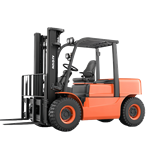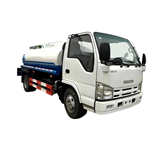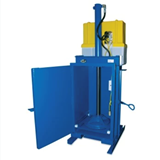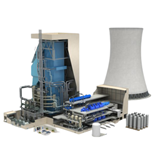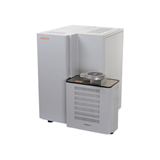Professor Richard Haynes of CRC CARE and the University of Queensland has told the CleanUp 09 conference in Adelaide about striking progress in developing new uses for substances which have become a real headache for society to dispose of.
“A major thrust of our work is to transform industrial and municipal wastes that nobody wants into an environmentally friendly opportunity to make viable and marketable products,” he says.
“For example Australia currently produces 13 million tonnes of flyash from coal-fired power generation and a similar quantity of ‘red mud’ from bauxite processing, along with millions of tonnes of biosolids from urban sewage treatment and green waste from parks, people’s gardens, food and factory effluent.
“By combining these resources in creative ways we can produce new products to boost fertility, overcome soil deficiencies, absorb toxic contaminants and beautify our urban landscapes,” Prof. Haynes explains. “These include garden mulches, organic soil amendments, garden compost, potting media and specially manufactured soils.”
Research at CRC CARE has included co-composting green waste with inorganic substances such as coal fly ash and organic resources such as grease trap waste, poultry manure and biosolids.
“Because urban green waste usually contains a lot of shredded wood and bark it doesn’t break down all that easily. However by adding readily decomposable material, this raises the temperature and produces a much better compost.
“By adding 20 per cent fly ash to green waste we can greatly increase its water-holding capacity, producing a topsoil replacement that is highly suitable for use in urban settings where people want to save water.”
Prof. Haynes team have also investigated a wide range of inorganic wastes such as steel slag, blast furnace slag, coal fly and bottom ash, red mud, water treatment sludge as well as organic sources such as tree bark, sugar mill mud, spent brewery yeast and prawn processing waste
“We have shown some of the more promising materials can be used to immobilise heavy metals in a metal-contaminated soil. This means we can use industrial wastes to prevent the toxic contamination caused by other forms of waste disposal.
“Both sugarcane and rice have a high requirement for silicon in the soil to grow properly – and we have found that slags, red mud, fly ash can all provide this important nutrient to crops at low cost.
“Likewise wastewater from dairy and meat processing plants can be used to supply nitrogen and phosphorus to farming soils if applied in the correct amounts.
By such methods, Prof. Haynes says, some of society’s worst waste problems can be turned into assets, helping to provide food, fertility and healthier landscapes while saving water and preventing pollution.
- Suppliers
- New to IndustrySearch? Book a Demo
- Advertise with us
- Login
- Email Marketing
- Buyers
- Get Quotes
- Articles & Ideas
- Login
- Subscribe to newsletter
- My Details
- Get Quotes
- Automation & Control
- Automotive Workshop Equipment
- Cleaning Equipment
- Construction & Heavy Machinery
- Conveyor Systems & Components
- Cranes & Hoists
- Electrical & Power Generation Equipment
- Electronic Components
- Farming & Agriculture
- Food & Beverage Processing
- Forklifts & Attachments
- Hydraulic & Pneumatic Equipment
- Industrial Materials, Tools & Components
- Industrial Pumps
- IT Hardware & Industrial Computing
- IT Software & Applications
- Laboratory Equipment & Instruments
- Manufacturing & Industrial Equipment
- Material Handling & Lifting
- Metalworking & Machining
- Mining Equipment & Machinery
- Packaging & Labelling Machinery
- Pallet Management
- Personal Protective Equipment
- Security & Surveillance
- Test & Measurement
- Transport Equipment
- Trucks & Trailers
- Warehouse Storage & Racking
- Waste & Environmental Management
- Welding Machines & Accessories
- Woodworking & Joinery Machines
- Workplace Equipment
- Workplace Safety Equipment
- Get Quotes
- Automation & Control
- Automotive Workshop Equipment
- Cleaning Equipment
- Construction & Heavy Machinery
- Conveyor Systems & Components
- Cranes & Hoists
- Electrical & Power Generation Equipment
- Electronic Components
- Farming & Agriculture
- Food & Beverage Processing
- Forklifts & Attachments
- Hydraulic & Pneumatic Equipment
- Industrial Materials, Tools & Components
- Industrial Pumps
- IT Hardware & Industrial Computing
- IT Software & Applications
- Laboratory Equipment & Instruments
- Manufacturing & Industrial Equipment
- Material Handling & Lifting
- Metalworking & Machining
- Mining Equipment & Machinery
- Packaging & Labelling Machinery
- Pallet Management
- Personal Protective Equipment
- Security & Surveillance
- Test & Measurement
- Transport Equipment
- Trucks & Trailers
- Warehouse Storage & Racking
- Waste & Environmental Management
- Welding Machines & Accessories
- Woodworking & Joinery Machines
- Workplace Equipment
- Workplace Safety Equipment
Trusted by 1.2 million Australian industrial buyers
Buyers
- Discover products & solutions
- Login
- Subscribe To Newsletter
- Browse All Products
- Read Articles
Suppliers
Advertise
- Promote your products & solutions
- New to IndustrySearch? Book a Demo
- Login / Forgot Password
- Advertise Your Products
- Success Stories
- Email Marketing
- Suppliers
- Advertise with us
- Login
- Email Marketing
- Buyers
- Get Quotes
- Articles & Ideas
- Login
- Subscribe to newsletter
- My Details
Get Quotes
- Automation & Control
- Automotive Workshop Equipment
- Cleaning Equipment
- Construction & Heavy Machinery
- Conveyor Systems & Components
- Cranes & Hoists
- Electrical & Power Generation Equipment
- Electronic Components
- Farming & Agriculture
- Food & Beverage Processing
- Forklifts & Attachments
- Hydraulic & Pneumatic Equipment
- Industrial Materials, Tools & Components
- Industrial Pumps
- IT Hardware & Industrial Computing
- IT Software & Applications
- Laboratory Equipment & Instruments
- Manufacturing & Industrial Equipment
- Material Handling & Lifting
- Metalworking & Machining
- Mining Equipment & Machinery
- Packaging & Labelling Machinery
- Pallet Management
- Personal Protective Equipment
- Security & Surveillance
- Test & Measurement
- Transport Equipment
- Trucks & Trailers
- Warehouse Storage & Racking
- Waste & Environmental Management
- Welding Machines & Accessories
- Woodworking & Joinery Machines
- Workplace Equipment
- Workplace Safety Equipment
Get Quotes
- Automation & Control
- Automotive Workshop Equipment
- Cleaning Equipment
- Construction & Heavy Machinery
- Conveyor Systems & Components
- Cranes & Hoists
- Electrical & Power Generation Equipment
- Electronic Components
- Farming & Agriculture
- Food & Beverage Processing
- Forklifts & Attachments
- Hydraulic & Pneumatic Equipment
- Industrial Materials, Tools & Components
- Industrial Pumps
- IT Hardware & Industrial Computing
- IT Software & Applications
- Laboratory Equipment & Instruments
- Manufacturing & Industrial Equipment
- Material Handling & Lifting
- Metalworking & Machining
- Mining Equipment & Machinery
- Packaging & Labelling Machinery
- Pallet Management
- Personal Protective Equipment
- Security & Surveillance
- Test & Measurement
- Transport Equipment
- Trucks & Trailers
- Warehouse Storage & Racking
- Waste & Environmental Management
- Welding Machines & Accessories
- Woodworking & Joinery Machines
- Workplace Equipment
- Workplace Safety Equipment
Trusted by 1.2 million Australian industrial buyers

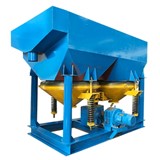


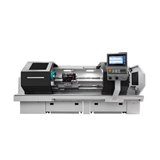
-160x160-state_article-rel-cat.png)
